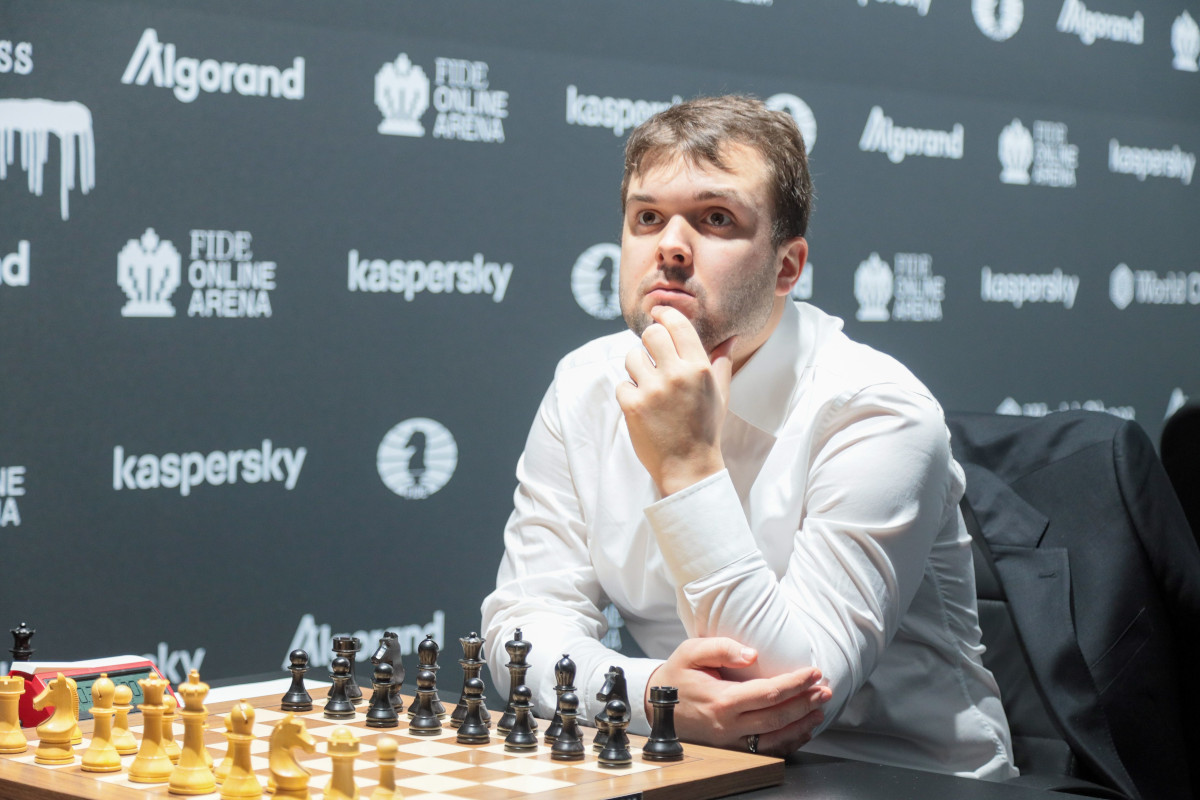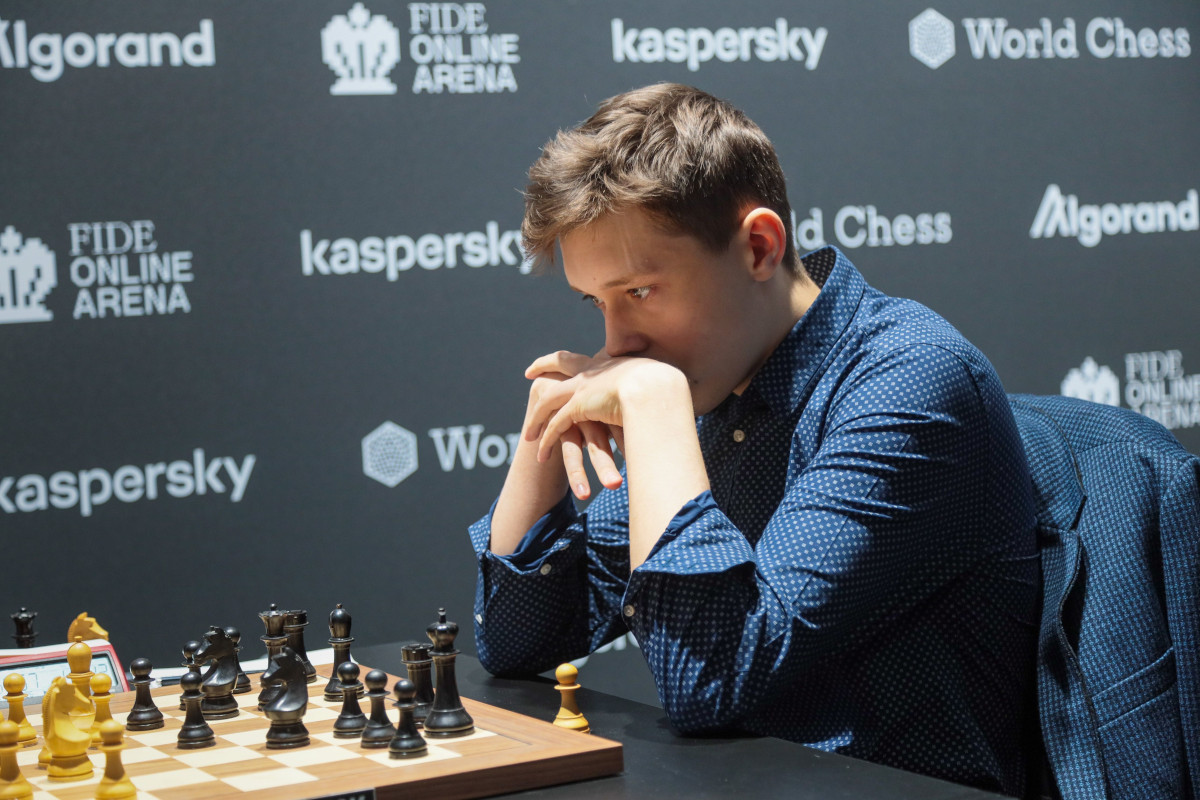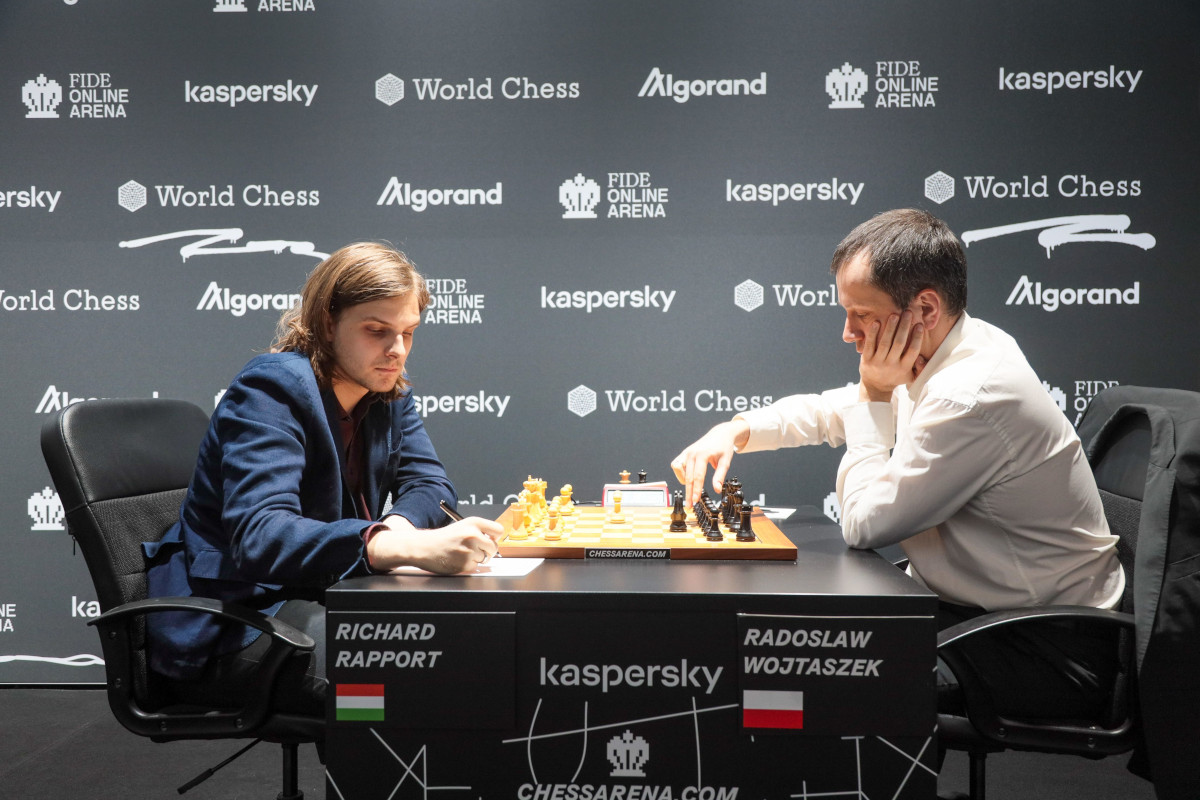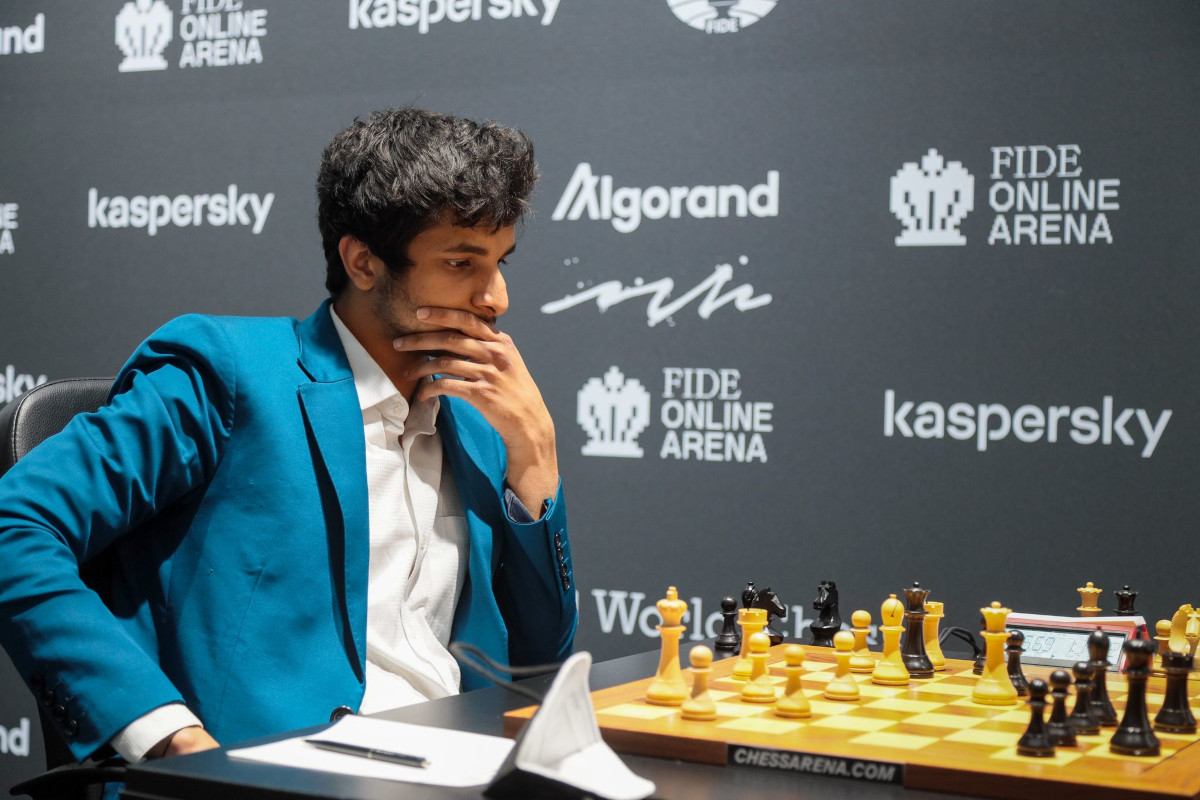


 The novel format used at the FIDE Grand Prix makes every single game count during the group stage. With only four players in each pool, a victory against a direct contender for first place goes a long way in improving the winner’s chances to reach the knockout. The stakes are high, and nobody wants to let even the smallest of opportunities slip away while fighting for a spot in the Candidates Tournament.
The novel format used at the FIDE Grand Prix makes every single game count during the group stage. With only four players in each pool, a victory against a direct contender for first place goes a long way in improving the winner’s chances to reach the knockout. The stakes are high, and nobody wants to let even the smallest of opportunities slip away while fighting for a spot in the Candidates Tournament.
Monday’s fourth round in Berlin saw Wesley So getting a crucial victory over Leinier Dominguez. Both US grandmasters had collected one win in the first half of the group stage, and were tied atop the standings table in pool D. Instead of keeping it safe, the compatriots entered a deep strategical battle. The Filipino-born star, who was playing with the black pieces, came out on top after 39 moves.
Equally crucial was Vladimir Fedoseev’s victory over Grigoriy Oparin. In the all-Russian matchup, Fedoseev got to beat his countryman for a second time in the event. Thanks to this victory, the man from Saint Petersburg is now sharing first place with Radoslaw Wojtaszek in pool B.
The one other game that ended decisively on Monday saw Daniil Dubov defeating Vincent Keymer with the white pieces. Dubov is now sharing second place with Vidit Gujrathi in pool C, a full point behind sole leader Levon Aronian.
Both games in pool A were tense-filled encounters, but for very different reasons.
In the game between Alexander Grischuk and Andrey Esipenko, the younger Russian spent over 10 minutes as early as move 6, and continued to use vast amounts of time in the early middlegame. Of course, his opponent was also low on time early on — as per usual. The contenders played each of their last 15 moves before the time control in less than 3 minutes (Grischuk never spent more than 1 minute), but Esipenko nonetheless managed to keep the balance in a slightly inferior position. The draw was signed on move 41.
Meanwhile, Hikaru Nakamura was surprised by Etienne Bacrot’s bold tenth move out of a French Defence.
10...g5 had been played by Ian Nepomniachtchi at last year’s Paris leg of the Grand Chess Tour, but apparently Naka was not expecting this specific line to appear on the board, as he thought for 23 minutes before responding with the novelty 11.Nf3.
White had the upper hand, but it is never easy to find the refutation to a risky move over the board, particularly with little time on the clock. Eventually, a draw by repetition ended the game on move 25.
The US grandmaster thus kept the lead in the standings table. As he told Michael Rahal, this had a lot to do with his decision-making process during the game:
If today’s situation was different, probably I would have played on, and maybe I would have won, maybe I would have lost — both results are very possible. But, yeah, it didn’t seem like the right situation to go crazy, especially with limited time.

Andrey Esipenko
After collecting 1½ points from two sharp struggles in the previous rounds, Richard Rapport finally played a somewhat ‘normal’ game while facing Radoslaw Wojtaszek with the white pieces on Monday. The Hungarian had a slight edge throughout, but his rival defended well until securing the draw.
On the other hand, the battle between Grigoriy Oparin and Vladimir Fedoseev saw the white player dangerously committing to leave his king in the centre in the early middlegame.
Oparin’s 17.Kd1 was by no means forced, as 17.h6 and 17.Bxe6 are both perfectly playable. As he explained afterwards, though, he had completely missed that after 17...fxe4 18.dxe4 Bxc4 19.Qxc4 Fedoseev had 19...Qg4
White is already in deep trouble here, but Oparin’s 20.Qd3 was another grave mistake — 20.Kc2 was the best alternative, given that after 20...Qxg2 21.Nh4 Bxh4 White has 22.Rg1 with counterplay on the kingside.
In the game, Fedoseev showcased his exceptional tactical ability to make the most of the attacking chances granted by the weak position of his opponent’s king. Oparin kept fighting until move 41, when he finally admitted defeat.

Richard Rapport facing Radoslaw Wojtaszek
Levon Aronian continues to lead in group C after safely getting a draw with the black pieces against the ever-dangerous Vidit Gujrathi. The Indian, who went into round 4 in sole second place, was joined by Daniil Dubov on a fifty-percent score after the Russian inflicted Vincent Keymer’s second consecutive loss.
For a second day in a row, Keymer found himself in a strategically inferior queenless position with an opponent’s minor piece stationed on a far-advanced outpost.
Aronian had placed his bishop on d6 with decisive effect in round 3, while Dubov had his octopus-knight on the very same square the very next day.
There followed 22...Bg6 23.Rd4 Ne7 24.g4 Rb6 25.Bb5 Rb8
After going back and forth with his rook along the b-file, Keymer again found himself dealing with a claustrophobic position. Dubov needed seven more moves to secure his first victory of the tournament.

Still in second place — Vidit Gujrathi
In the longest game of the day, Pentala Harikrishna failed to make the most of a small advantage against Alexei Shirov. Much earlier in pool D, Wesley So had defeated Leinier Dominguez in the crucial matchup between co-leaders.
The Cuban-born grandmaster called his main mistake to have spent almost 40 minutes on move 19. Soon after, he missed a tactical shot by his rival when he played 23.Qg3
The problem for White in this position is that after 23...Qxg3 24.fxg3 Nd3 25.Bc2 Black has the very strong 25...Rf2
Dominguez confessed that he had missed this recourse for Black — perhaps partially due to the fact that the knight was ‘blocking’ the rook along the f-file before jumping to d3. As the Cuban also mentioned, though, he could have gone for 26.Bc3 in the diagrammed position, entering a worse yet defensible position after 26...Rxc2 27.Rxc2 Nxe1 28.Bxe1.
Instead, his decision to go for 26.Bxd3 Rxd2 27.Bxg6 hxg6 quickly led to a clearly inferior endgame with four rooks still on the board.
White has more pawn weaknesses than his opponent, while Black even got to defend the base of his structure on the queenside with 28.Re7 Rxb2. So showed his usual splendid technique to get the all-important victory eleven moves later.